What do candidates on the Construction Site Safety course actually do?
The course on BS 7375 is often 'tuned' to suit the audience on the day, (dealing with mixtures of electrical engineers, site foremen and managers for example) and our instructors promote structured debates on the key topics within the Standard which are of interest to the candidates.
We look at the way in which electricity is distributed around a construction site: how reduced low voltage systems are used and what they can power; where 230V and 400V supplies are used, etc. It's important that the candidates know about the effects of electric shock so we cover that in detail, making particular mention of the fact that electrical shocks sustained in a construction site scenario are likely to be more dangerous than shocks sustained indoors in a dry environment. The candidates need to know about the dangers of overloading, short circuit and earth faults so we also look at these in a little detail and explain how fuses, circuit breakers and earthing are used to combat these dangers. These important issues are explained in a way that the candidates can understand without getting involved in all the theory behind the issues. The following are extracts from the course notes for this part of the course.
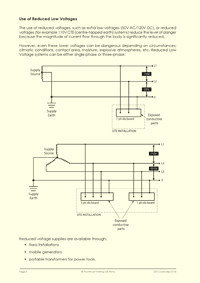 |
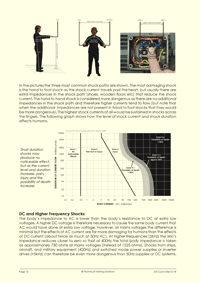 |
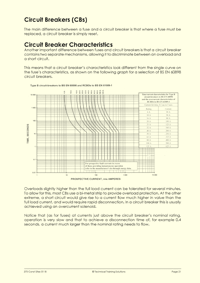 |
This is page 8 of the course notes for the BS7375 course, describing how RLV is used on construction sites |
This is page 10 of the course notes for the BS7375 course, explaining the effects of electric shock |
This is page 21 of the course notes for the BS7375 course, explaining how circuit breakers operate |
The course goes on to look at the requirements of BS7375 with particular emphasis on how cabling should be structured, the types of connectors that should be used, the required IP ratings, etc. The following are some of the course notes for this part of the course.
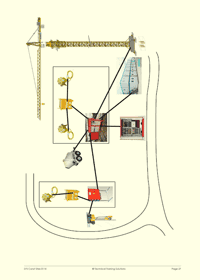 |
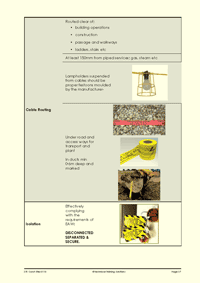 |
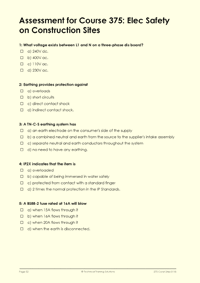 |
This is page 27 of the course notes for the BS7375 course, showing how electricity should be distributed around a construction site |
This is the page 37 of the course notes for the BS7375 course, showing what sort of lampholders are required, how underground cables should be marked and the importance of proper isolation procedures |
This is the page 52 of the course notes for the BS7375 course - the first page of a 20 question multiple-choice assessment paper that the candidates have to complete to the instructor's satisfaction |
The course finishes with a 20 question multiple-choice assessment paper, which tests the key issues that the candidates should have learned.
If you would like to learn more about the course on BS7375 - Electrical Safety on Construction Sites then please call us.


